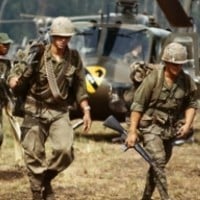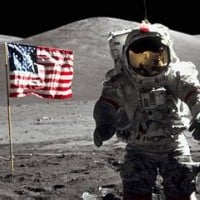Top 10 Events of the Cold War
During WWII, there were three main allies: Russia, the UK, and the US. Towards the end of the war, their leaders began to meet to discuss the next steps. Winston Churchill, Joseph Stalin, and FDR/Harry Truman were among them. However, this friendship soon deteriorated, and the war's winners would have a rivalry that lasted from the late 1940s until the early 1990s when the Soviet Union finally collapsed. This rivalry is now known as the Cold War.The Cuban Missile Crisis could be called the climax of the Cold War. Had things played out slightly differently than they did, the entire world as we know it could have changed. We could have been in World War 3, with nuclear warfare most likely occurring in that scenario. But how did we get to this point? It all started when a U-2 Spy plane captured a photo of Soviet missiles in Cuba. It's important to note that Fidel Castro, who was the communist leader of Cuba at the time, became good friends with the Soviets. These missiles were capable of striking anywhere on the mainland US. So, America was definitely concerned with these missiles being just 90 miles off their coast, although Russia probably didn't like the US keeping missiles in Turkey either. The US rivalry with Cuba also didn't help matters; the missiles were likely placed to deter future attacks like the Bay of Pigs. Ultimately, the US Navy formed a blockade around Cuba. Eventually, the standoff came to a close when President Kennedy agreed to terms with Nikita Khrushchev. They removed their missiles from Cuba, and the US would not invade Cuba and remove their missiles from Turkey as part of the negotiations.
After World War 2, European nations were politically divided. Many Western nations formed NATO, led by the US, Great Britain, and France, while almost all the others joined the Warsaw Pact. The original members of NATO were Belgium, Great Britain, Canada, Denmark, France, Iceland, Italy, Luxembourg, the Netherlands, Norway, Portugal, and the United States. This alliance of nations became the backbone for the West in the standoff against the Soviets for the next four decades. Greece, Spain, West Germany, and Turkey also joined NATO.
One of the most tense situations of the entire Cold War was Berlin itself, which was in East German territory, but the city itself was split between the East and Western sides. Up until the wall was built, anyone living on the East side could travel to the Western side and defect to the West. Russia wasn't happy with that, so they built a wall to supposedly keep Western fascists out of the East, but it was really to stop people from escaping to the West. It stood for over 25 years. For the longest time, it was one of the most powerful symbols of the Cold War and the division and friction that existed between the two sides. Nowhere was the divide between communism and capitalism more apparent than in Berlin and Germany in general, with the West side being prosperous and developing much faster economically, while the East struggled mightily.
When the West united to form NATO, Russia wasn't too pleased, fearing they were out to take down the USSR. They were especially displeased when NATO accepted West Germany and allowed them to re-militarize. The Soviets saw this as a potential threat. In response, they founded their own pact with mainly puppet states. Aside from the Soviets themselves, the Warsaw Pact included Albania, Poland, Romania, Hungary, East Germany, Czechoslovakia, and Bulgaria. The Warsaw Pact lasted until 1991 when it finally dissolved.
When America found out about their next-door neighbors, Cuba, setting up a communist regime in their backyard, they weren't too happy, especially with Fidel Castro coming to power. America had supported the Cuban President, Fulgencio Batista, despite him being a corrupt dictator, as he was considered pro-American. When Castro came to power, many Cubans actually welcomed him because he opposed America's ownership of their sugar plantations and cattle ranches. This led America to make several assassination attempts, but none of them were successful (spoiler alert). The Bay of Pigs was a failed attempt to push Castro out of power. The CIA believed that this would work, but there was one problem: they were outnumbered by Castro's troops and surrendered in less than 24 hours. The entire operation was a disaster from the start.
After World War II, the Allies split Germany into East and West, and they did the same with Berlin. The Soviets grew frustrated with the West and decided to cut off all railroads and highways into the western side of the city, hoping it would drive France, the UK, and America out for good because they weren't too fond of the Allies uniting in the West and they also wanted control over all of Berlin. The Allies responded to the blockade by flying supplies into the city instead. Over the course of the airlift, they carried more than 2.3 million tons of cargo, with an average daily delivery of about 5,000-8,000 tons of cargo during that time. The failure of the blockade portrayed the Soviet Union in a negative light to the rest of the world.
Up until the mid-20th century, the Korean Peninsula belonged to the Japanese Empire. However, after World War II, it was given to America and Russia to decide its fate. They divided it along the 38th parallel, establishing a northern communist side and a southern capitalist side. Neither side was content with staying on their respective side; both were interested in controlling the entire peninsula. Once the northern forces reached Seoul, war broke out. The allied forces initially struggled, but after the Inch'on landing, they began pushing the North back. However, China grew concerned that the Allies would advance into their territory, so they sent their troops in. In the end, the war resulted in a stalemate, with the boundary drawn along the 38th parallel and the creation of a demilitarized zone that still exists today. It is one of the most heavily fortified borders in the world, with any attempt to cross from the North usually resulting in death. Tensions between North and South Korea persist to this day. It wasn't until the Trump administration that a US President finally visited the demilitarized zone. Donald Trump had multiple summits with Kim Jong Un, yet tensions between the two sides remain.

During JFK's presidency, the US was concerned about the spread of communism worldwide. So, when Vietnam split into North and South, the US decided to intervene due to the domino effect. They feared that if Vietnam fell to communism, other countries like Cambodia, Myanmar, Laos, Brunei, etc., would follow. Eventually, many Americans became frustrated with the lack of success in Vietnam, and the opposition to the Vietnam War grew significantly, leading to America's eventual withdrawal. The aftermath of the war had a lasting impact in America, with many veterans facing harsh treatment from both pro and anti-war groups. Moreover, the cost of the war negatively affected the overall economy.

The space race was a series of events between the Soviets and Americans in an attempt to be the first to reach space. The Soviets achieved the milestone of sending the first satellite into space (Sputnik) and the first man into space. In 1961, Yuri Gagarin became the first person in human history to orbit the Earth. The US, taken by surprise, responded with the Explorer 1 Satellite and established the National Aeronautics and Space Administration, known as NASA. Eisenhower also created two additional space-oriented security forces, one controlled by the Air Force and the other by the CIA. Eventually, they sent Alan Shepard into space, although he did not orbit the Earth. Finally, during the Apollo missions, the US achieved the historic feat of landing the first man on the moon in human history. America perceived this moment as an official "win" in the Space Race, which had captured the attention of the American people from beginning to end, with developments on both sides heavily covered by national media. This interest was further amplified by the new medium of television. However, interest in space exploration declined by the mid-1970s, and in 1975, the joint Apollo-Soyuz mission signaled the end of the space race.
The US became concerned about the military advancements of the Soviets, so President Eisenhower approved the U-2 Spy Missions. In May 1960, tensions escalated when the USSR shot down an American U-2 Spy plane and captured its pilot, Francis Gary Powers, who was sentenced to 10 years in prison. He was eventually released after the Americans agreed to exchange a captured Soviet spy back to Russia in the first "spy swap." Ultimately, Eisenhower had to acknowledge that these missions had been ongoing for years, despite initially claiming it was a weather plane that had flown "off course." Soviet Leader Nikita Khrushchev exposed Eisenhower's false statement. The aftermath of this incident disrupted talks between Eisenhower and Khrushchev, who were scheduled to have a summit in Paris. Khrushchev and many Soviet ambassadors walked out of the meeting, feeling that they could no longer cooperate with Eisenhower.